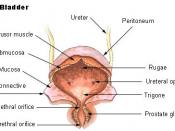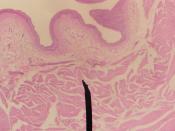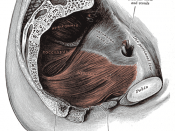According to Ebersole and Hess (2001), incontinence affects over 1.5 million Canadians. 11% in men and 17% in women over 65 years old suffer incontinence. More than 50% of all nursing home residents have urinary incontinence, which imposes significant psychosocial, physical and financial burdens on society, families and environment. There is a high correlation between urinary incontinence, pressure ulcer, infection, depression, increased social isolation and lower self-esteem, but incontinence is misunderstood and overlooked by the public, even health professionals. They believe incontinence is a normal part of ageing and can do nothing it. In fact, incontinence can be cured; at least minimized. To do so, we need a holistic assessment to understand the types and causes of incontinence.
There are six main types of urinary incontinence: stress, urge, mixed, overflow, functional, and iatrogenic incontinence. To determine the types of urinary incontinence, assessment includes a health history, physical examination, urinalysis and bladder scan for post-void residual.
Stress incontinence is a loss of small amount of urine with increased abdominal pressure. Vaginal examination may discover a weakness of the pelvic floor muscle, disposition of the bladder. It is more common in overweight menopause women, especially the women having multiple births. Kegel and weight control exercise, vaginal weights and other nonsurgical devices are helpful. If these still cannot help, estrogens or certain medications such as phenylpropanolamine are employed to increase tone of the muscles around the urethra. Surgical suspension of the bladder neck has proved effective management of stress incontinence. Urge incontinence leaks a large amount of urine. Clients cannot hold once sensation is perceived. It is associated with frequent urination due to detrusor instability, related to central nervous system disorders and local irritative disorders such as urinary tract infections. Visual scan can see the redness of orifice of urethra and urinalysis and...


